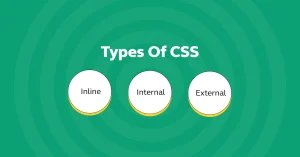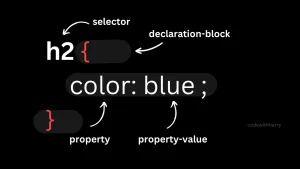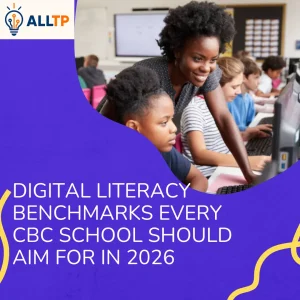In today’s digital world, children and teens are spending more time on screens than ever before. According to recent studies, the average child spends 3 to 5 hours per day on recreational screen time, with teens often clocking in even higher numbers. Much of this time is dedicated to gaming, watching videos, or scrolling through social media.
This has sparked a growing debate among parents, educators, and health experts: Is screen time always harmful? The answer isn’t black and white. While excessive or unmonitored use can lead to negative outcomes such as reduced attention span, sleep issues, and social withdrawal, screen time can also be harnessed for learning, creativity, and skill-building if directed wisely. That’s where coding for kids comes in.
While gaming can be entertaining and even cognitively stimulating, coding transforms screen time into a powerful tool for growth. It develops problem-solving skills, encourages creativity, and lays the foundation for future tech careers. Help your child make the most of their screen time, enroll them in our bootcamp today and unlock their potential as confident, young digital creators.
1. Understanding the Difference Between Coding and Gaming
a. What Is Gaming?
Gaming refers to playing electronic games on devices like computers, consoles, tablets, or smartphones. These games come in a variety of genres:
- Action games that test reflexes and coordination.
- Strategy games that challenge planning and decision-making.
- Sandbox games (like Minecraft) that offer open-ended exploration and creativity.
- Simulation games that mimic real-life experiences (e.g., racing, farming, or city-building).
For many children and teens, gaming is a source of fun, friendly competition, and a way to connect socially, especially through multiplayer or online games. It can be mentally engaging and even encourage teamwork, but it’s often a consumer-oriented activity.
b. What Is Coding?
Coding, also known as programming, is the process of writing instructions that a computer can understand to perform specific tasks. These instructions, written in programming languages like Python, JavaScript, or Scratch can be used to build:
- Websites
- Apps
- Games
- Robotics programs
- Animations
Unlike gaming, coding turns screen time into a productive and creative process. It teaches kids how to solve problems logically, think critically, and bring their ideas to life. When kids learn to code, they move from being passive users of technology to active creators.
2. The Benefits of Gaming
While often criticized, gaming isn’t inherently bad in fact, when played in moderation and with intention, it can offer a range of cognitive and social benefits for children and teens:
- Improves Hand-Eye Coordination
Fast-paced games require players to react quickly to visual cues, enhancing coordination and motor skills. - Encourages Strategic Thinking and Persistence
Many games involve solving complex puzzles, planning moves ahead, or adapting to challenges. Players often try, fail, and try again developing resilience and problem-solving habits. - Provides Social Opportunities
Online and multiplayer games can help kids build teamwork and communication skills. Playing with peers fosters connection and collaboration, especially in cooperative game environments. - Can Inspire Interest in Tech-Related Fields
Exposure to well-designed games can spark curiosity about how games are made, leading some kids to explore areas like game design, animation, or software development.
In Coding Kenya programs and workshops, we see how gaming can be a springboard into deeper tech learning. Many young learners who love playing games become passionate about creating their own—fueling a pathway from gaming to coding, creativity, and innovation. While gaming shouldn’t replace other learning activities, it can be part of a healthy digital balance when guided appropriately.
3. The Benefits of Coding
Coding is more than just typing commands into a computer, it’s a gateway to essential 21st-century skills. When kids learn to code, they’re not just gaining a technical skill; they’re developing a mindset grounded in logic, creativity, and problem-solving.
In the context of Coding Kenya, introducing programming at a young age supports national goals around digital literacy and innovation. From building mobile apps to solving real-world challenges, coding empowers children to become creators of technology, not just users.
- Builds Critical Thinking and Logic
Coding challenges children to break problems into smaller parts, identify patterns, and develop logical solutions skills that apply across subjects like math and science. - Fosters Creativity Through Digital Creation
Whether it’s designing a game, animating a story, or building an app, coding allows kids to express their creativity in interactive, innovative ways. - Offers Real-World Career Skills
Coding introduces children to in-demand tech skills that can lead to future opportunities in software development, data science, artificial intelligence, and more. - Encourages Perseverance and a Debugging Mindset
Errors are part of the process in coding. Kids learn to identify mistakes (bugs), test solutions, and keep trying until they succeed building persistence and a growth mindset. - Teaches Kids to Be Creators, Not Just Consumers
Instead of passively using apps or games, coding empowers kids to understand how technology works and make their own digital tools, games, or websites.
Coding transforms screen time into a hands-on learning experience that’s both fun and future-ready.
4. The Risks of Excessive Gaming
While gaming has its benefits, too much of it especially without guidance or boundaries can lead to negative consequences that affect a child’s health, behavior, and academic performance.
- Addictive Tendencies and Dopamine Overdrive
Many games are designed to trigger reward systems in the brain, releasing dopamine and creating a cycle of instant gratification. Over time, this can lead to screen dependency and difficulty focusing on less stimulating activities like homework or reading. - Exposure to Violent Content
Some popular games feature intense violence, aggressive behavior, or inappropriate themes that may desensitize children or influence how they handle conflict. - Poor Sleep and Reduced Physical Activity
Extended gaming especially late into the evening can disrupt sleep patterns, reduce outdoor play, and contribute to sedentary habits that affect physical health. - Academic and Behavioral Issues
Excessive screen time can lead to procrastination, missed assignments, or poor classroom performance. In some cases, it may also result in increased irritability, difficulty with social interactions, or reduced attention spans.
It’s important for parents to monitor not just the amount of gaming, but also what kinds of games are being played, and how they fit into the child’s overall routine and well-being.
5. Why Coding Is a Better Use of Screen Time
While gaming primarily entertains, coding engages. It turns screen time into an opportunity for learning, creating, and building future-ready skills.
- Coding Is Active Engagement vs. Gaming’s Passive/Reactive Nature
Gaming often involves reacting to pre-designed challenges, while coding requires kids to think critically, make decisions, and build something from scratch. It transforms them from users into creators. - Long-Term Value: School Projects, Internships, Entrepreneurship
Kids who code can apply their skills to school assignments, science fair projects, or even create their own apps and websites. Some go on to build tech-based businesses or land internships at an early age. - Opens Pathways to STEM Careers
Coding lays the groundwork for careers in software engineering, data science, game development, robotics, and artificial intelligence. Early exposure increases confidence and interest in STEM subjects. - Combines Entertainment with Education
Coding for 6year olds to 16year olds can be just as fun as gaming especially when kids learn to design their own games, animations, or stories. It blends play with purpose, keeping kids engaged while teaching them valuable skills.
Choosing coding over excessive gaming doesn’t mean eliminating fun, it means channeling that fun into future opportunities.
6. Blending Both: When Gaming Inspires Coding
Gaming and coding don’t have to be opposites. In fact, for many kids, gaming is the first step toward discovering a love for coding. The key is in how that interest is guided and nurtured.
- Platforms Like Minecraft Education Edition and Roblox Studio
These platforms allow kids to go beyond just playing they can modify the game environment, create custom experiences, and even write scripts using real coding languages like Lua or JavaScript. This hands-on, gamified approach makes coding approachable and fun. - Stories of Kids Who Started as Gamers and Transitioned into Coding
Many young developers began by wondering, “How was this game made?” From there, they started exploring coding tutorials, joining online communities, and eventually building their own games or apps. These journeys show how gaming curiosity can evolve into tech creativity. - Using Games as a Gateway to More Productive Screen Time
Parents and educators can use a child’s favorite game as a bridge to learning. For example, if a child loves Minecraft, introduce them to redstone circuits or command blocks. If they enjoy Roblox, encourage them to try Roblox Studio and design their own game worlds.
With the right tools and encouragement, gaming can spark an interest in coding, turning entertainment into empowerment.
7. Tips for Parents: Turning Screen Time into Skill Time
Helping your child shift from passive screen time to productive tech engagement doesn’t have to be a battle. With a few smart strategies, you can transform how your child interacts with technology making it fun, balanced, and educational.
- Set Healthy Screen Time Boundaries
Establish daily or weekly limits and ensure a balance between recreational screen time, physical activity, sleep, and schoolwork. Use tools like screen time trackers or parental control apps when needed. - Introduce Coding Platforms
Get your child started with beginner-friendly coding platforms like Scratch, Tynker, or Code.org. These platforms use colorful visuals and gamified lessons that make coding fun and approachable. - Create a Reward System That Prioritizes Learning-Based Apps
Reward productive screen use such as completing a coding challenge or building a simple app with extra game time or family recognition. Make learning feel exciting, not like a chore. - Co-Create Projects With Your Child
Collaborate on small coding projects, like building a simple game or interactive story. Your involvement boosts motivation and shows that learning can be a shared, enjoyable experience. - Enroll in Coding Bootcamps or Holiday Camps
Look for local or online coding camps in Kenya that offer structured learning experiences during holidays. These programs often include mentorship, peer collaboration, and real-world tech exposure.
By guiding your child to explore coding, you’re not just changing how they spend their screen time you’re opening doors to creativity, confidence, and future success.
8. Real-World Examples and Success Stories
Nothing inspires kids more than seeing other young people succeed through skills they can learn too. Around the world and right here in Kenya many children and teens have discovered their passion and potential through coding.
- Kelvin, 14 – Nairobi, Kenya
After attending a holiday coding camp, Kelvin began exploring Scratch and later Python. Within a year, he built a simple budgeting app for students and earned recognition in his school’s STEM fair. He now dreams of becoming a software engineer. - Samaira Mehta, 10 – USA
Samaira created a board game called “CoderBunnyz” to teach coding basics to kids. Her innovation led to speaking engagements at Google and Microsoft, and she has since launched coding workshops for thousands of students.
These examples show that coding isn’t just for adults or professionals, kids can create amazing things when given the tools, guidance, and encouragement. From apps that solve real-life problems to games that entertain and educate, children are proving that they can be leaders in the digital world.




